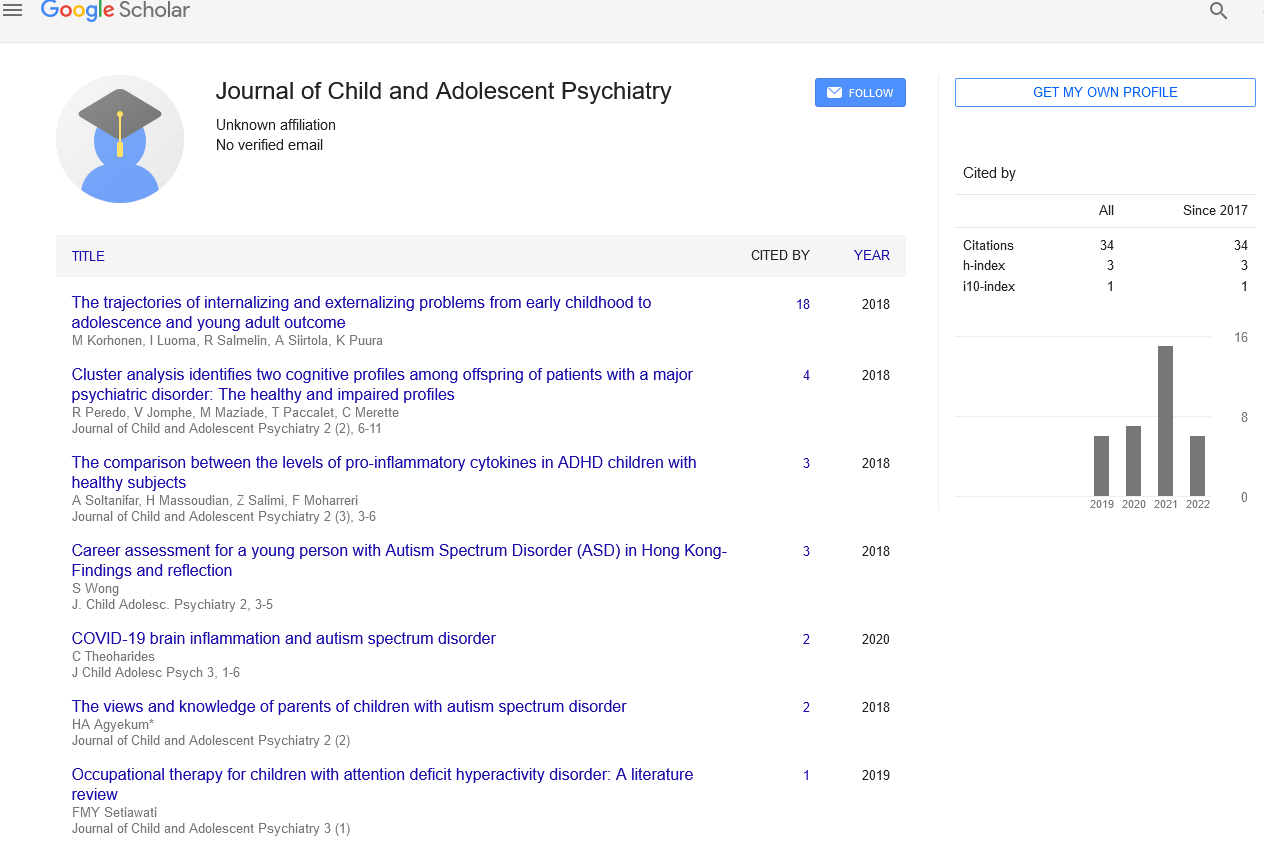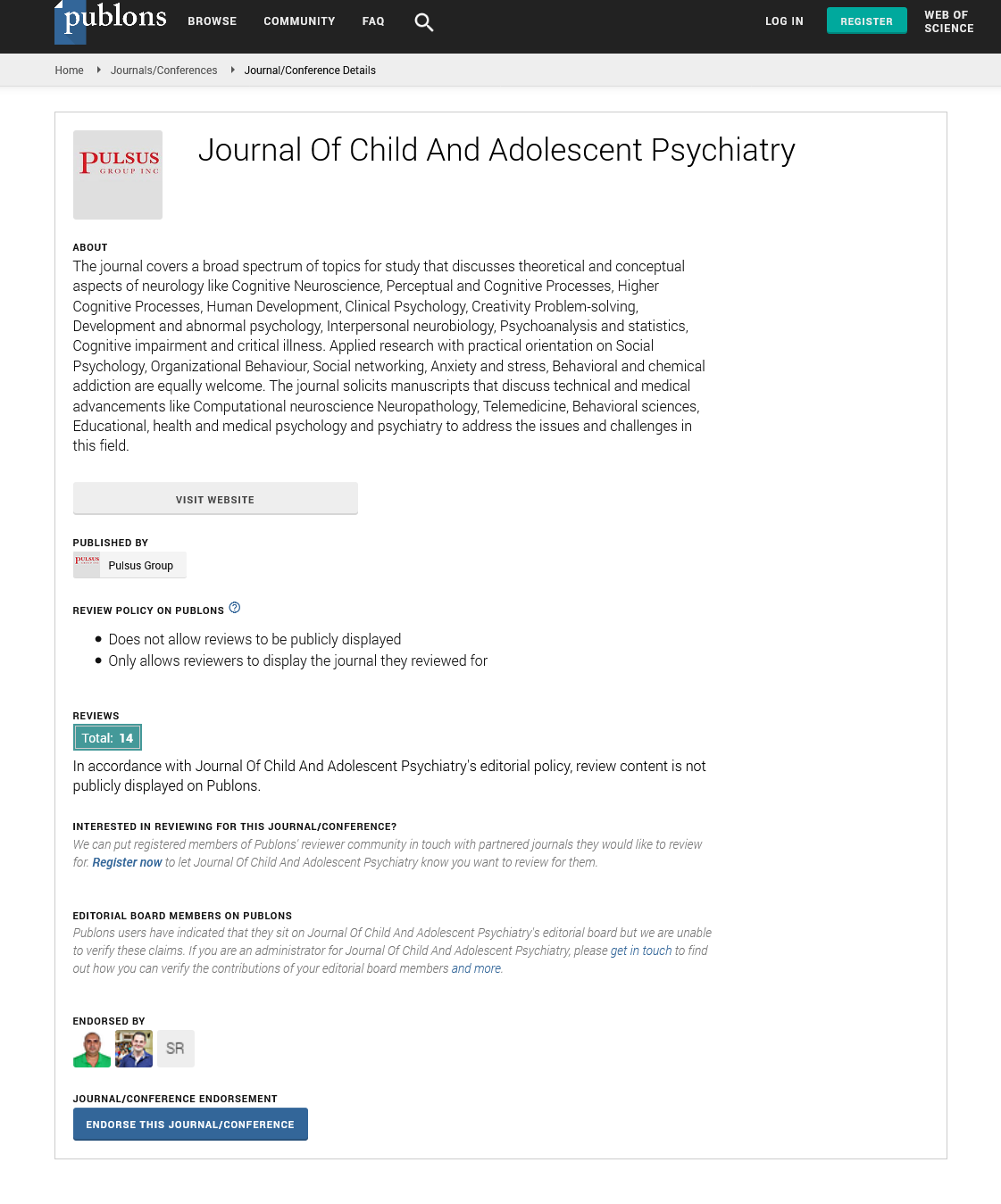Investigation of how and why people shift over the direction of their life
Received: 07-Jul-2021 Accepted Date: Jul 21, 2021; Published: 28-Jul-2021
Citation: James J. Investigation of how and why people shift over the direction of their life. Child Adolesc Psych. 2021;5(3):1.
This open-access article is distributed under the terms of the Creative Commons Attribution Non-Commercial License (CC BY-NC) (http://creativecommons.org/licenses/by-nc/4.0/), which permits reuse, distribution and reproduction of the article, provided that the original work is properly cited and the reuse is restricted to noncommercial purposes. For commercial reuse, contact reprints@pulsus.com
Description
Formative brain science is the logical investigation of how and why people shift over the direction of their life. Initially worried about babies and youngsters, the field has extended to incorporate immaturity, grown-up advancement, maturing, and the whole life expectancy. Formative therapists plan to clarify how thinking, feeling, and practices change all through life. This field looks at change across three significant measurements: actual turn of events, psychological turn of events, and social passionate turn of events. Inside these three measurements is a wide scope of subjects including engine abilities, leader capacities, moral arrangement, language obtaining, social change, character, passionate turn of events, self-idea, and personality development.
Formative brain science analyzes the impacts of nature and support on the cycle of human turn of events, and cycles of progress in setting across time. Numerous analysts are keen on the connections among individual qualities, the person's conduct, and natural elements, including the social setting and the constructed climate. Continuous discussions with respect to formative brain science incorporate organic essentialism versus neuroplasticity and phases of improvement versus dynamic frameworks of improvement.
Formative brain research includes a scope of fields, like instructive brain research, youngster psychopathology, scientific formative brain research, kid advancement, psychological brain science, natural brain science, and social brain research. Compelling formative analysts from the twentieth century incorporate Urie Bronfenbrenner, Erik Erikson, Sigmund Freud, Jean Piaget, Barbara Rogoff, Esther Thelen, and Lev Vygotsky.
Jean-Jacques Rousseau and John B. Watson are commonly referred to as giving the establishments to current formative brain research. During the eighteenth century, Jean Jacques Rousseau depicted three phases of advancement: newborn children (earliest stages), puer (youth) and immaturity in Emile: Or, On Education. Rousseau's thoughts were taken up unequivocally by instructors at that point.
Formative brain science by and large spotlights on how and why certain changes (psychological, social, scholarly, and character) throughout a human existence happen over the long haul. There are numerous scholars who have made a significant commitment to this space of brain science. One of them, Erik Erikson fostered a model of eight phases of mental turn of events. He accepted that people created in stages all through their lifetimes and that this would influence their practices.
" In the late nineteenth century, analysts acquainted with the transformative hypothesis of Darwin started looking for a developmental depiction of mental turn of events; noticeable here was the spearheading clinician G. Stanley Hall, who endeavored to associate periods of youth with past times of humankind. James Mark Baldwin, who composed articles on themes that included Imitation: A Chapter in the Natural History of Consciousness and Mental Development in the Child and the Race: Methods and Processes, was vigorously associated with the hypothesis of formative brain research. Sigmund Freud, whose ideas were formative, essentially influenced public discernments,.
He accepted there is strain between the cognizant and oblivious on the grounds that the cognizant attempts to keep down what the oblivious attempts to communicate. To clarify this, he created three character structures: the id, conscience, and superego. The id, the crudest of the three, capacities as indicated by the delight guideline: look for joy and stay away from torment. The superego plays the basic and admonishing job; and the sense of self is the coordinated, reasonable part that intervenes between the cravings of the id and the superego. In view of this, he proposed five widespread phases of improvement, that each is described by the erogenous zone that is the wellspring of the kid's psychosexual energy. The first is the oral stage, which happens from birth to a year old enough. During the oral stage, "the moxie is focused in a child's mouth." The child can suck. The second is the butt-centric stage, from one to three years old. During the butt-centric stage, the youngster craps from the rear-end and is regularly interested with their poo. The third is the phallic stage, which happens from three to five years old (the vast majority of an individual's character structures by this age). During the phallic stage, the youngster knows about their sexual organs. The fourth is the idleness stage, which happens from age five until pubescence. During the inactivity stage, the kid's sexual advantages are quelled. Stage five is the genital stage, which happens from adolescence until adulthood. During the genital stage, adolescence begins occurring.






